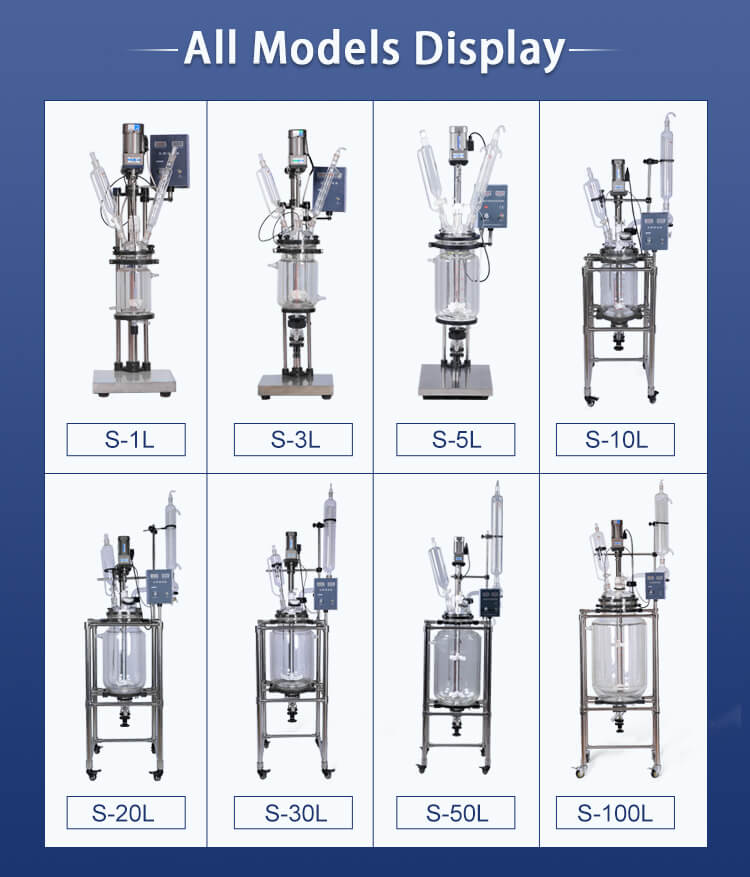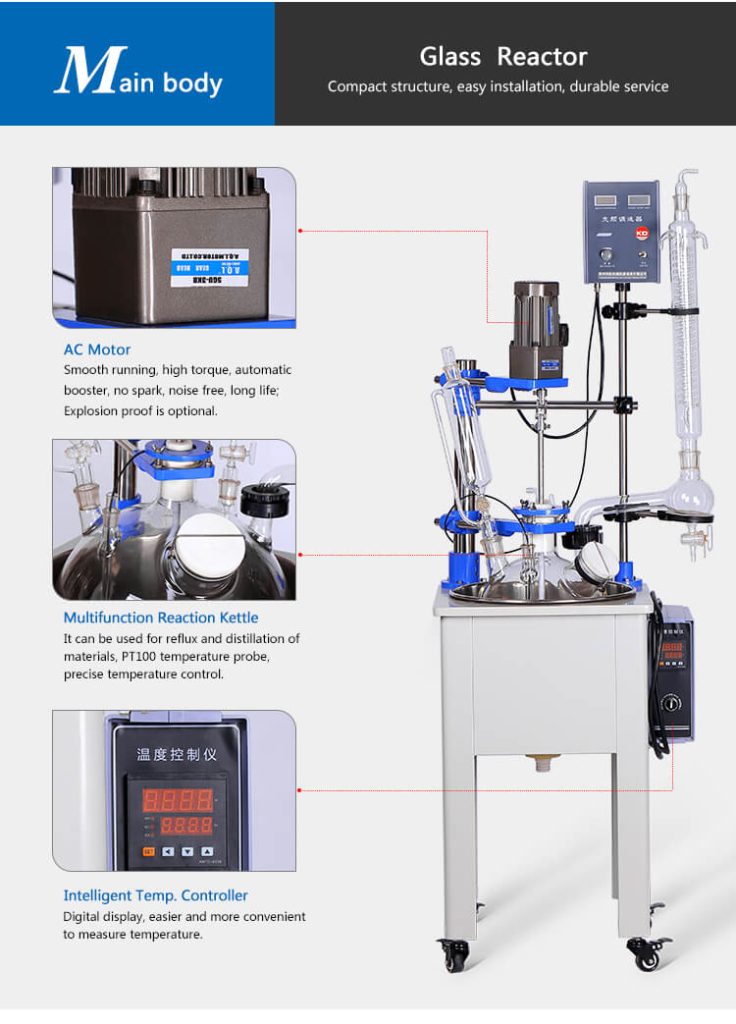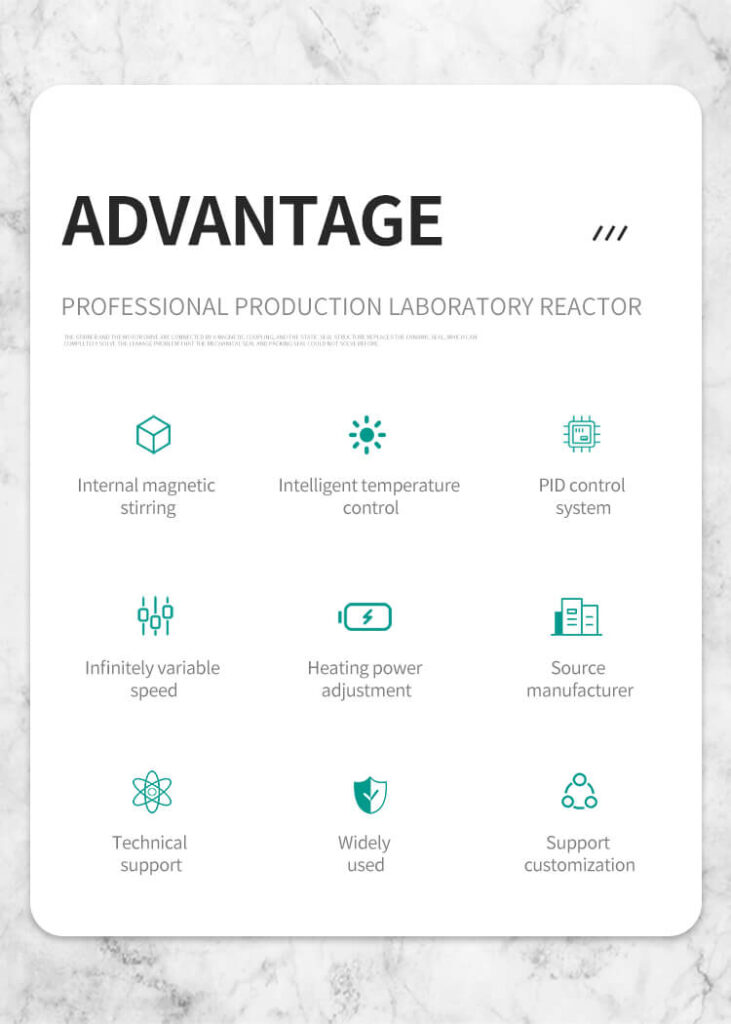In the dynamic world of scientific research and industrial processes, glass reactors with jacket design have emerged as pivotal tools, offering unparalleled advantages in various applications. This article delves into the intricate details of these reactors, underscoring their design, functionality, and the integration of single layer glass reactor technology.

Innovative Design and Functionality
At the heart of glass reactors with jacket design lies their distinctive construction. These reactors are crafted using high-quality borosilicate glass, renowned for its exceptional thermal and chemical resistance. The jacket, typically a double-layer structure surrounding the reactor’s core, allows for precise temperature control. This feature is crucial for processes requiring steady thermal conditions, such as chemical reactions, crystallization, and polymerization.
The jacketed design provides an additional layer of insulation and safety. It enables the circulation of heating or cooling fluids, ensuring that the reactor’s contents are maintained at the desired temperature without direct contact with the heat source. This minimizes the risk of thermal shocks and enhances the overall safety of the process.
Single Layer Glass Reactor: A Key Component
An integral part of this system is the single layer glass reactor. This component, simpler in design compared to its jacketed counterpart, is particularly useful for basic laboratory experiments and applications where temperature regulation isn’t as critical. The single layer glass reactor offers ease of use and visibility, allowing researchers to closely monitor the reaction process. Its simplicity also translates to cost-effectiveness, making it a popular choice for many laboratories.

Applications and Advantages
Glass reactors with jacket design are versatile tools in both research and industry. They are extensively used in pharmaceuticals, fine chemicals, and biochemical industries. Their transparent structure provides a clear view of the contents, facilitating process monitoring and control. Additionally, the inert nature of glass ensures that these reactors do not react with the chemicals inside, thereby maintaining the purity of the substances being processed.

In research settings, these reactors enable scientists to conduct controlled experiments, where maintaining a specific temperature range is critical. The jacketed design allows for both exothermic and endothermic reactions, broadening the scope of research and experimentation.
Conclusion
In conclusion, glass reactors with jacket design represent a significant advancement in laboratory and industrial equipment. Their unique design, combined with the integration of single layer glass reactors, offers a blend of safety, efficiency, and versatility. This makes them indispensable in various fields, paving the way for more precise, controlled, and safe chemical processing and experimentation. As technology evolves, we can expect these reactors to become even more sophisticated, further enhancing their capabilities and applications.
